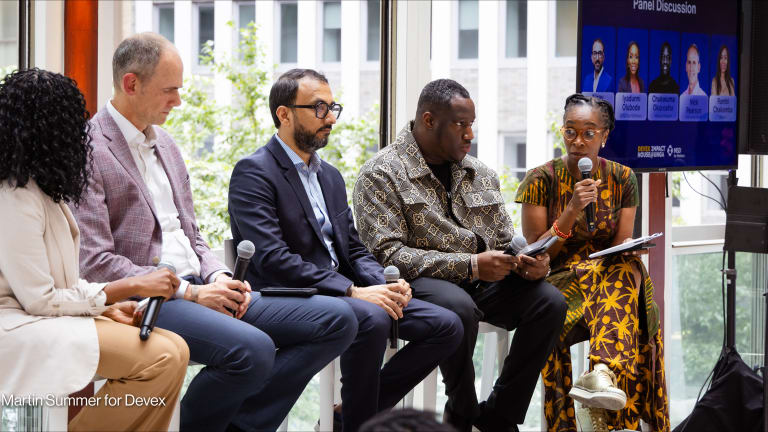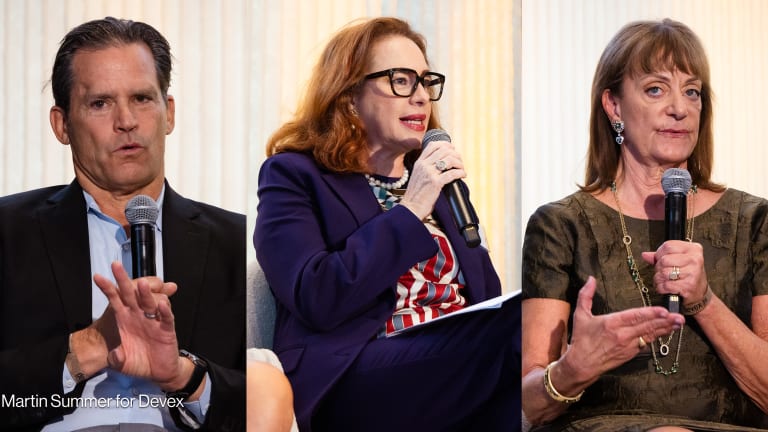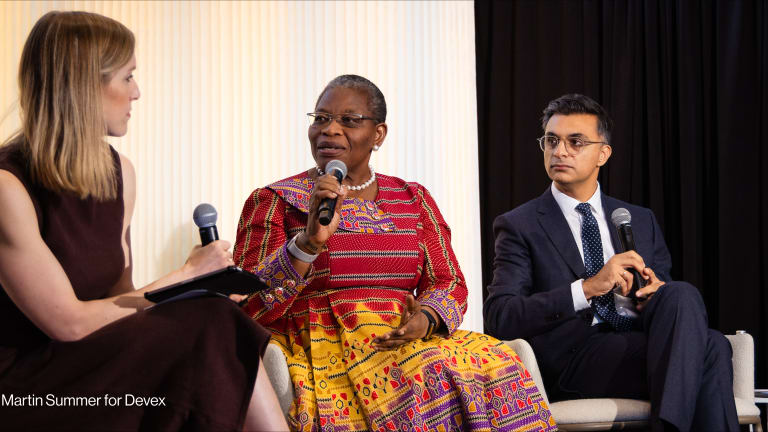
Partnerships and technology will define development assistance in the coming decade, and civil society will play an ever-greater role in both areas, said Lord Michael Hastings, KPMG’s global head of citizenship, at a Washington D.C. event convened to explore the future of development partnerships.
“It’s a different way of thinking about partnerships. It is not just the action of bringing together the empowered, those with resources and decision-making power, the development agencies and governments and businesses, but it’s about bringing in the voices of those who receive the development impact,” said Hastings at the event, hosted by the Center for Strategic & International Studies’ Project on Prosperity and Development.
The half-day forum, sponsored by KPMG, brought together representatives from government development agencies, international NGOs, and corporations who described emerging trends in the area of public-private partnerships for development.
William Reese, president and CEO of the International Youth Foundation, which has led innovative multi-year partnerships with corporations including Hilton, Caterpillar and Microsoft, said today’s public-private partnerships may be most useful as a “model” that can be replicated at a more local level.
“Partnerships should not just be the province of big global companies. The true wealth is at the local level, with the local private sector,” said Reese. By partnering with local businesses, development actors can “not only tap megabucks but also get the sustainability, political will and country ownership we’re all looking for.”
Companies have become increasingly sophisticated in their approaches to development, said other speakers at the event.
Paula Luff, vice president for corporate social responsibility at Hess Corporation, said that where companies once aimed to perform “random acts of kindness” for “beneficiaries,” they now aim to engage strategically with customers and partners.
Luff, who previously worked at Pfizer, said that the AIDS crisis in Africa represented a turning point for many multinationals.
“Companies realized that if we were not at the table with stakeholders, rolling up our sleeves and coming up with real solutions, we’d be on the menu for lunch,” she said.
British Robinson, senior vice president for innovation and strategic initiatives for the nonprofit Women for Women International, said she has observed a growing confidence among companies as they work in development.
“The style has changed in the last three years. Companies are saying to their partners: You don’t get to design this alone. We’re going to co-design this or we’re going to walk away,” said Robinson, who previously served as director of private sector engagement for the U.S. President’s Emergency Plan for AIDS Relief, or PEPFAR.
Tam Nguyen, corporate responsibility manager for Chevron, said his experience has taught him that companies must have a clear business case for entering into partnerships for development.
“It’s hard to justify projects internally in the long term if it is built solely around a social objective,” said Nguyen.
For some companies, this confidence has meant they no longer feel the need to partner directly with implementers and government agencies. She pointed to recent corporate citizenship activities at Coca-Cola, Goldman Sachs and Wal-mart, where corporations consulted with other development actors but clearly retained leadership of their initiatives.
“We are starting to see companies and foundations cutting out the middle man and working directly with civil society,” she said. “That’s not necessarily a bad thing, but we need to understand it better.”
Robinson argued that development leaders should see the increasingly autonomy of companies as a sign that partnerships have come of age. “We’ve taught them so well, now they are able to do it on their own.”
She cautioned that in this new landscape, government development agencies will need to define a new role for themselves. “If companies are handling the areas they are better at, like technology, then government can deal with the issues of deep poverty.”
Luff, of Hess Corporation, agreed that corporations in some cases choose to bypass bilateral and multilateral donors and focus instead on local governments.
“As companies become established in different countries, their local staff bring their own relationships, whether that’s with the ministry of health” or a local nonprofit, said Luff. In the future, “there will be less of an affinity for [bilateral donors] and less value to that intermediary role.”
Find out more about the Niger Delta Partnership Initiative and its African cousin, the Foundation for Partnership Initiatives in the Niger Delta, led by Chevron and partners.
Explore related content:








